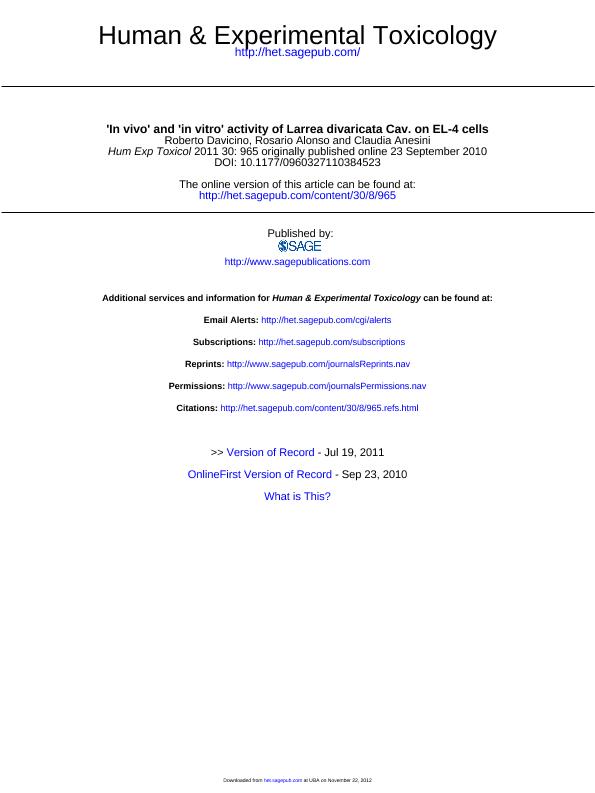Artículo
'In vivo' and 'in vitro' activity of Larrea divaricata Cav. on EL-4 cells
Fecha de publicación:
08/2011
Editorial:
SAGE Publications
Revista:
Human and Experimental Toxicoloxy
ISSN:
0960-3271
Idioma:
Inglés
Tipo de recurso:
Artículo publicado
Clasificación temática:
Resumen
Larrea divaricata is a plant widely used in folk medicine in Argentina. It has been demonstrated that an aqueous extract of L. divaricata possesses a biphasic effect on cell proliferation, at low concentrations exerts a stimulatory action and at high concentrations exerts anti-proliferative effects upon the T lymphoma BW 5147; therefore, we propose in this paper to test the effect of the extract 'in vitro' and 'in vivo' in another T-cell lymphoma named EL-4. It was analyzed 'in vitro' cell proliferation by tritiated thymidine uptake and the effect of the extract on tumors induced in mice analyzing tumor progression and survival.The results showed that the aqueous extract induced the proliferation of tumor cells at all the concentrations studied. The results 'in vivo' showed that the aqueous extract stimulated significantly the size of tumors and that untreated mice lived longer than those treated. It is important to be very careful when plant extracts are selected for the treatment of several diseases. Consequently, before using a plant extract, specific scientific studies must be undertaken on different models to certificate therapeutic and adverse effects. Moreover, it can be said that L. divaricata has a specific anti-tumor mechanism of action depending on the targets.
Palabras clave:
'In Vivo'
,
El-4
,
Larrea Divaricata
,
Proliferative Effect
,
T Lymphoma
Archivos asociados
Licencia
Identificadores
Colecciones
Articulos(IQUIMEFA)
Articulos de INST.QUIMICA Y METABOLISMO DEL FARMACO (I)
Articulos de INST.QUIMICA Y METABOLISMO DEL FARMACO (I)
Citación
Davicino, Roberto Carlos; Alonso, Maria del Rosario; Anesini, Claudia Alejandra; 'In vivo' and 'in vitro' activity of Larrea divaricata Cav. on EL-4 cells; SAGE Publications; Human and Experimental Toxicoloxy; 30; 8; 8-2011; 965-971
Compartir
Altmétricas




